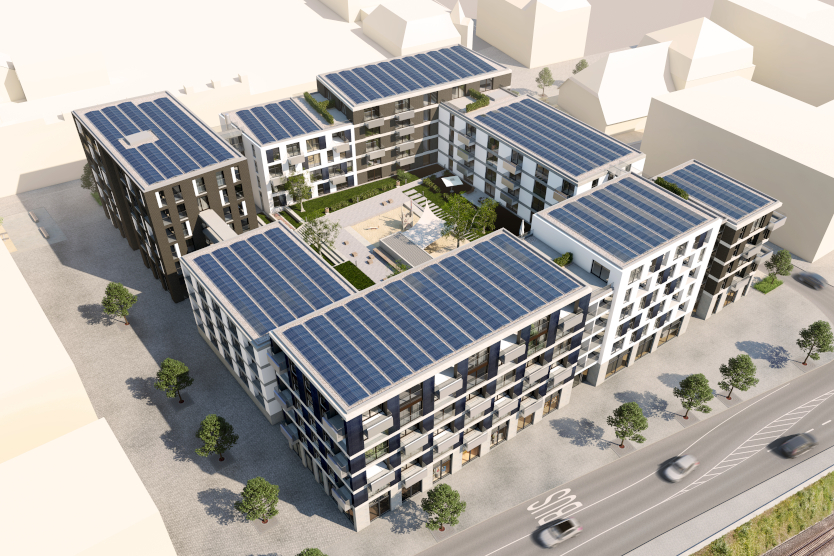
Aerial view on the block to be completed in the first construction phase (study)
© Architekten Graf + Graf
The main focus of the planned district in Esslingen, near Stuttgart, will be on developing solutions beneficial for the operation of the grid and for balancing power generation and peak loads in a supraregional grid. A high energy demand is anticipated for the over 600 planned flats, offices and commercial units as well as the new building to be constructed for the Esslingen University of Applied Sciences. Not all of the required energy can be autonomously generated from renewable energy sources within the district itself. The plan is therefore to take, whenever necessary, the electricity generated from renewable energy sources from the surplus of supra-regional grids.
However, to be as independent as possible of the fluctuating supply of surplus power, storage solutions will play an essential role in the energy concept for the Neue Weststadt ("New city west") district: excess energy will be stored in the form of hydrogen and fed back into the grid as electricity when needed. The waste heat produced by an electrolyzer in transformation processes is fed into a local heat grid. Gas will also be used for climate-neutral mobility in the district.
Apart from the use of hydrogen, the city of Esslingen also plans to promote the use of more electric cars on the roads in future. In order to achieve this, an area-wide network of charging stations for private vehicles and a car-sharing scheme within the district will be set up. The use of electric buses will similarly be intensified. There are also plans to facilitate the feeding of power from vehicles into the district grid.
The project is being funded over a period of five years until the end of 2022 as part of the ENERGIEWENDEBAUEN research initiative of the Federal Ministry for Economic Affairs and Energy (BMWi) and the Federal Ministry of Education and Research (BMBF).


